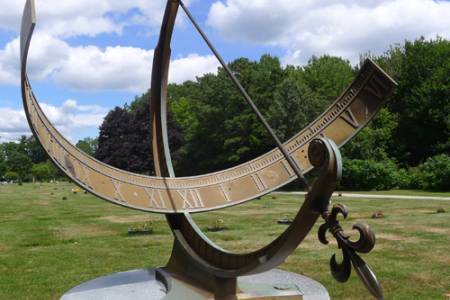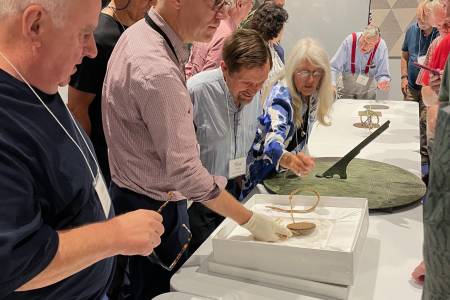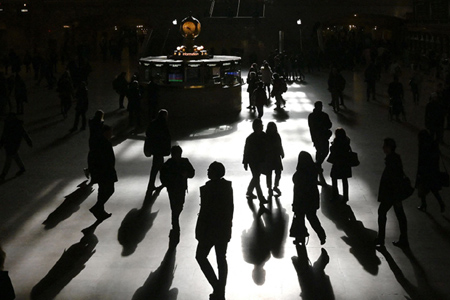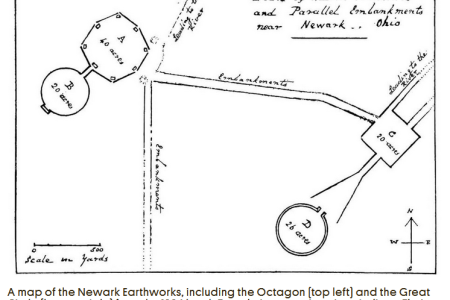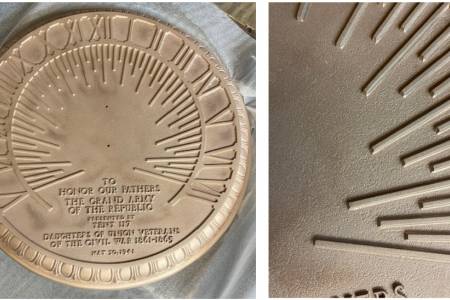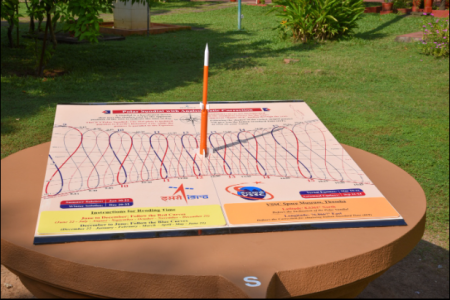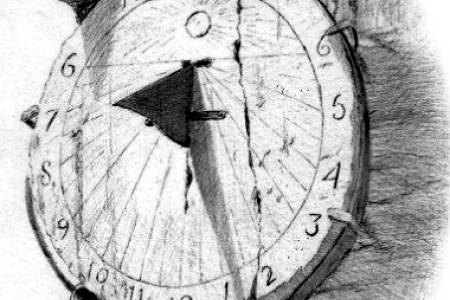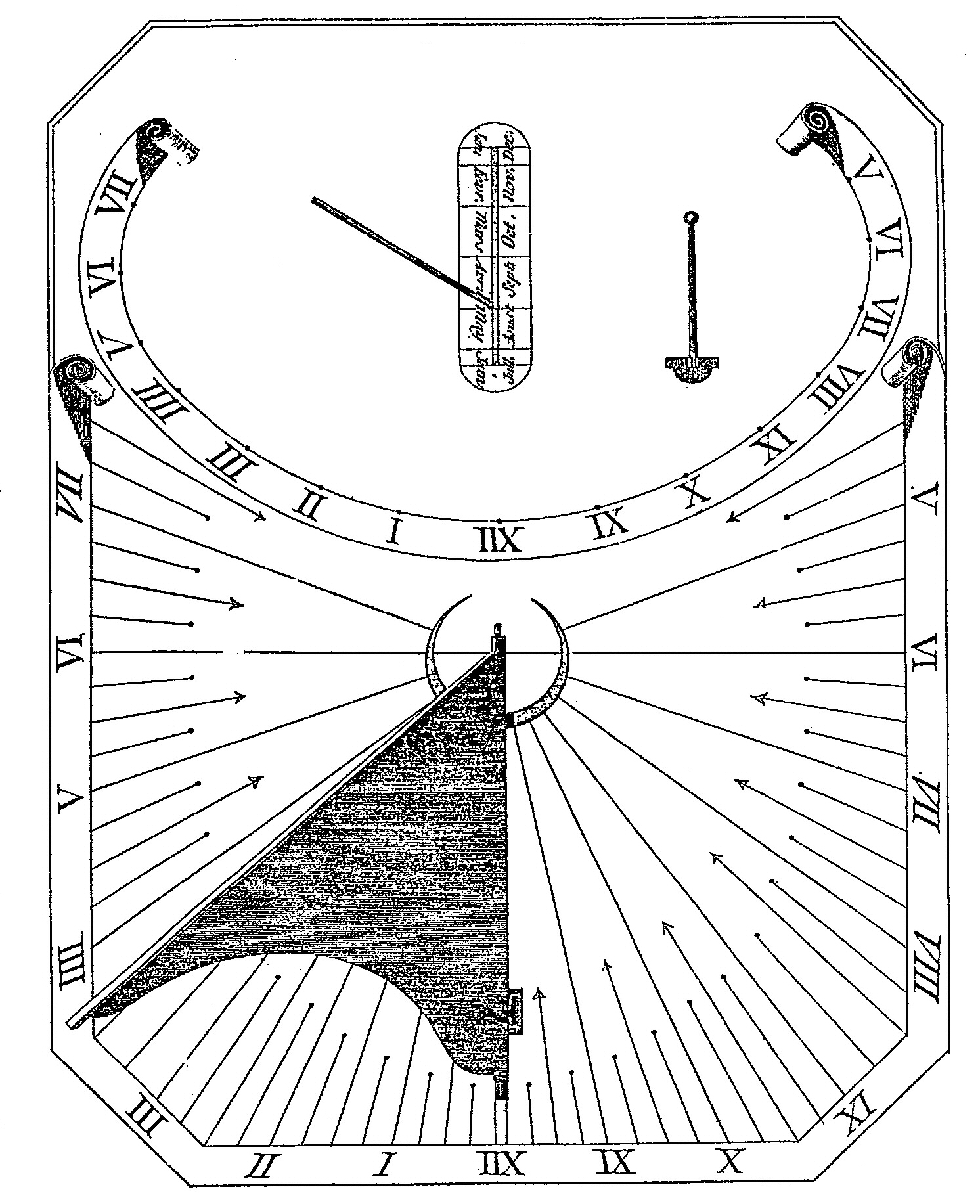 Drawing of Horizontal and Analemmatic Sundial Drawing of Horizontal and Analemmatic Sundial"Analemmatic or Azimuthal Dial"
J.J. de LaLande 1784
|
The Analemmatic Sundial SourceBook was first published in 2004, revised in 2014, and now is again available in digital form on CD or by download from the north American Sundial Society. What is it? It is a very comphrehensive reference to the origins, history, and modern evolution of the analemmatic sundial compiled and edited by Fred Sawyer III, President of NASS.
It started with J.L de Vaulezard publishing a small work of 15 pages in 1640 descibing the dial in vague terms, promising to reveal its construction later "if I see that the work has been well received by you...." Four years later de Vaulezard published his "Treatis of the origin, demonstration, construction and usage of the analemmatic dial". A decade later Samuel Foster published "Elliptical or Azimuthal Horologiography" further describing the analemmatic sundial. The SourceBook reprints a facsimile of this and three other of Foster's original works.
The Historical Period includes not only the works of de Vaulezard and Foster but works by Aubri, Tuttell, Richer, Parent, Bion, Lalande, Bedos de Celle, Lambert, Oberreit, Boutereau, Meikle, Perret, Peaucellier, Viala, Lisbonne, Gruey, Marchand, Roguet and Chomard. For over 250 years these authors provide the earliest proof of the analemmatic dial, the introduction of the Foster/Lambert, diametral, and Parent variations, as well as many important historical and theoretical discussions of the analemmatic dial and its properties.
Study of the analemmatic sundial had a revival at the turn of the 20th century and again beginning in 1986 with the publication of "Equator Projection Sundials" by de Rijk. Other articles include R.J. Vinck's "Times of Sunrise and Sunset on the Analemmatic Sundial" further descriptions of seasonal points by Bailey and Sonderegger. Vinck's "The Elliptical, Circular and Linear Dials" detailing of the mathematical foundation of a whole class of azimuthal sundials with examples of strange looking sundials by Sawyer, Olgesby, Gianni, Massé, Sassenburg, Sonderegger, and Rouxel.
Fred Sawyer III has a number of articles within the Analemmatic SourceBook, including "Of Analemmas, Mean Time and the Analemmatic Sundial", "Foster's Diametrical Sundial", and many more.
The Analemmatic Sundial SourceBook provides a rich historical and mathematical account of the Analemmatic Sundial and its modern derivatives. Order yours today by clicking here: NASS Publications Order Form
Open the "Read More" to see the detailed contents
Section I An Historical Overview
1 Janin, 1974. The analemmatic sundial: history and developments.
2 Sawyer, 2003. Desperately seeking Vaulezard – a tale of frustration.
Section II The Historical Period
3 de Vaulezard, 1640. Treatise or usage of the analemmatic dial.
4 de Vaulezard, 1644. Treatise of the origin, demonstration, construction and usage of the analemmatic dial.
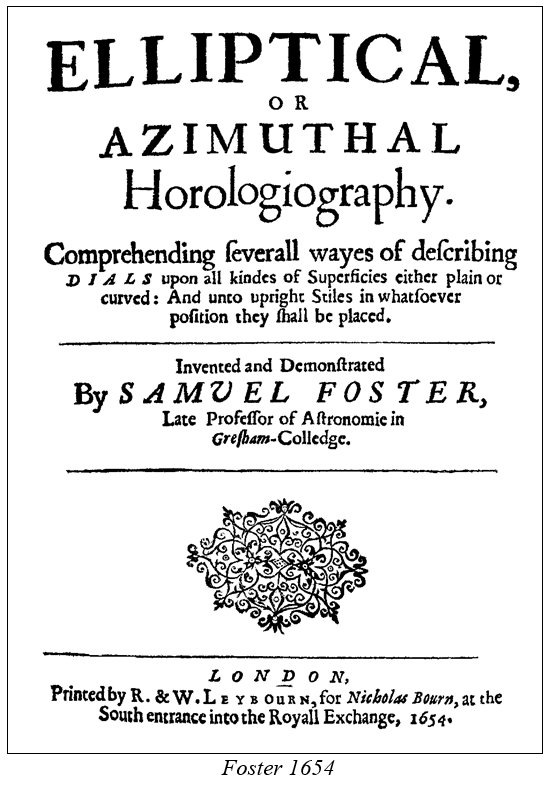
5(2) Foster, 1654. Circular horologiography
5(3) Foster, 1654. Rectilineal or diametral horologiography.
5(4) Foster, 1654. Elliptical horologiography
6 Aubri, 1680. The use of the horloge or dyall azimutall.
7 Ozanam, 1694 Drawing a horizontal dial on the ground with plants
8 Tuttell, 1698. The description and uses of a new contriv'd eliptical double dial.
9 Richer, 1701. To trace a portable analemmatic dial, which can also be traced in a garden.
10 Parent, 1701. Universal horizontal dial composed of an azimuthal and a horizontal.
11 Parent, 1701. Of a new analemmatic rectilinear universal dial which orients itself.
12 Bion, 1709. The construction and use of the analemmatick or ecliptick horizontal dial.
13 de LaLande, 1757. Problem of gnomonics. To trace an analemmatic, azimuthal, horizontal, elliptic dial whose style is an indefinite vertical line.
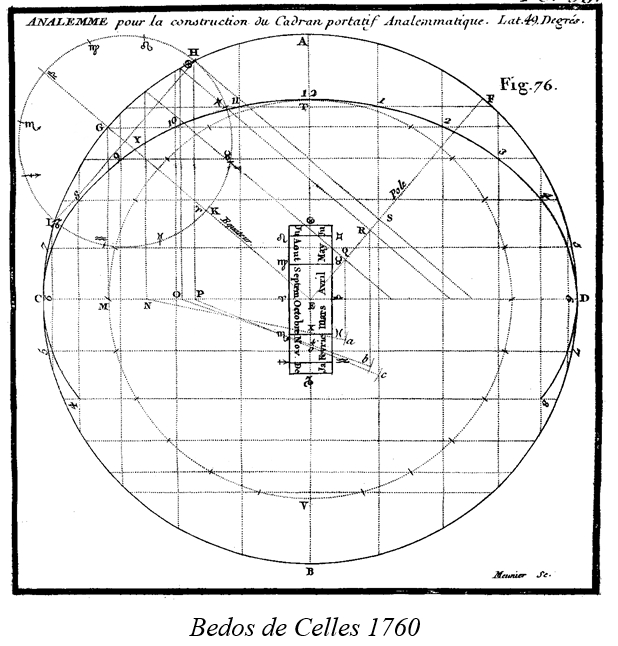
15 Lambert, 1770. Remarks and appendices on gnomonics.
16 Lambert, 1775. A new type of sundial.
17 de Castillon, 1776. Azimuthal or analemmatic dial.
18 de Lalande, 1784. Dial. Analemmatic or azimuthal dial.
19 Oberreit, 1786. On a new kind of sundial invented by Lambert.
20 Anonymous, 1808. A horizontal sundial. Without center, without hour lines and without gnomon.
21 Boutereau, 1845. Azimuthal dials.
22 Meikle, 1852. Dials with variable centres.
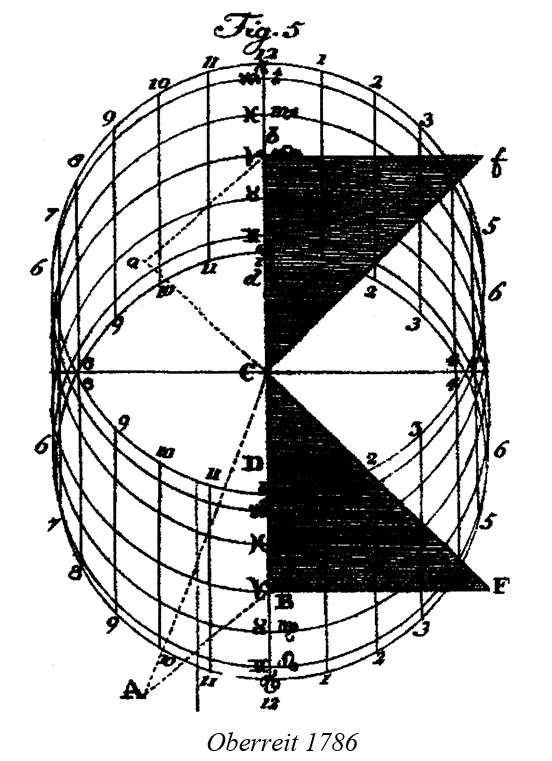
24 Peaucellier, 1856. Theory of the Dijon sundial, its generalization.
25 Viala, 1862. Theory and construction of the portable sundial called analemmatic.
26 Lisbonne, 1873. Azimuthal sundial
27 Gruey, 1902. The Dijon sundial.
28 Gruey, 1902. On a problem of gnomonics.
29 Marchand, 1902. Sundial.
30 Chomard, 1906. The analemmatic dial and the retrogradation of the shadow.
31 Roguet, 1912. The sundial at Brou.
Section III The Modern Era

33 Rohr, 1989. Lambert’s circles
34 Sawyer, 1991. A self-orienting equiangular sundial.
35 Sawyer, 1992. Foster's diametral sundial.
36 Sawyer, 1994. Of analemmas, mean time and the analemmatic sundial.
37 Oglesby, 1995. A sundial to enjoy.
38 Terwilliger, 1995. Two layout tools for analemmatic dials.
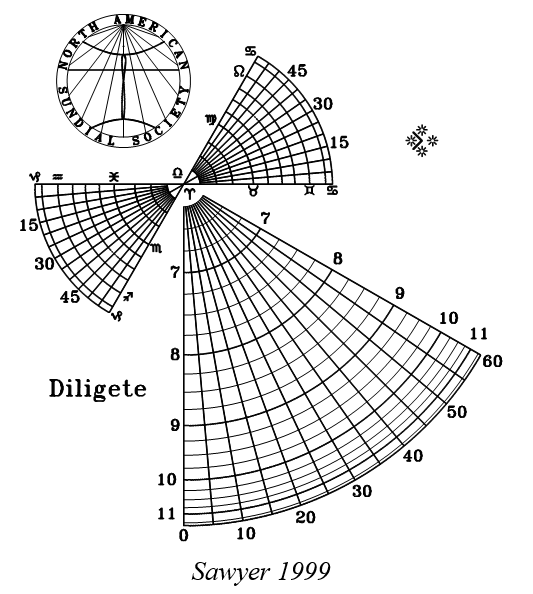
40 Aulenbacher, 1996. Analemmatic sundials.
41 Vinck, 1996. The elliptical, circular and linear dials.
42 Massé, 1998. Central projection analemmatic sundials.
43 Massé, 1998. Two mean-time analemmatic sundials.
44 Sassenburg, 1998. Analemmatic sundial with fixed gnomon
45 Ferrari, 1999. Rectilinear analemmatic sundials.
46 Sawyer, 1999. The NASS angel.
47 de Vries, 2000. Multiple analemmatic sundials.
48 Bailey & Miklos, 2003. Elliston Park analemmatic sundial: Calgary, Alberta.


